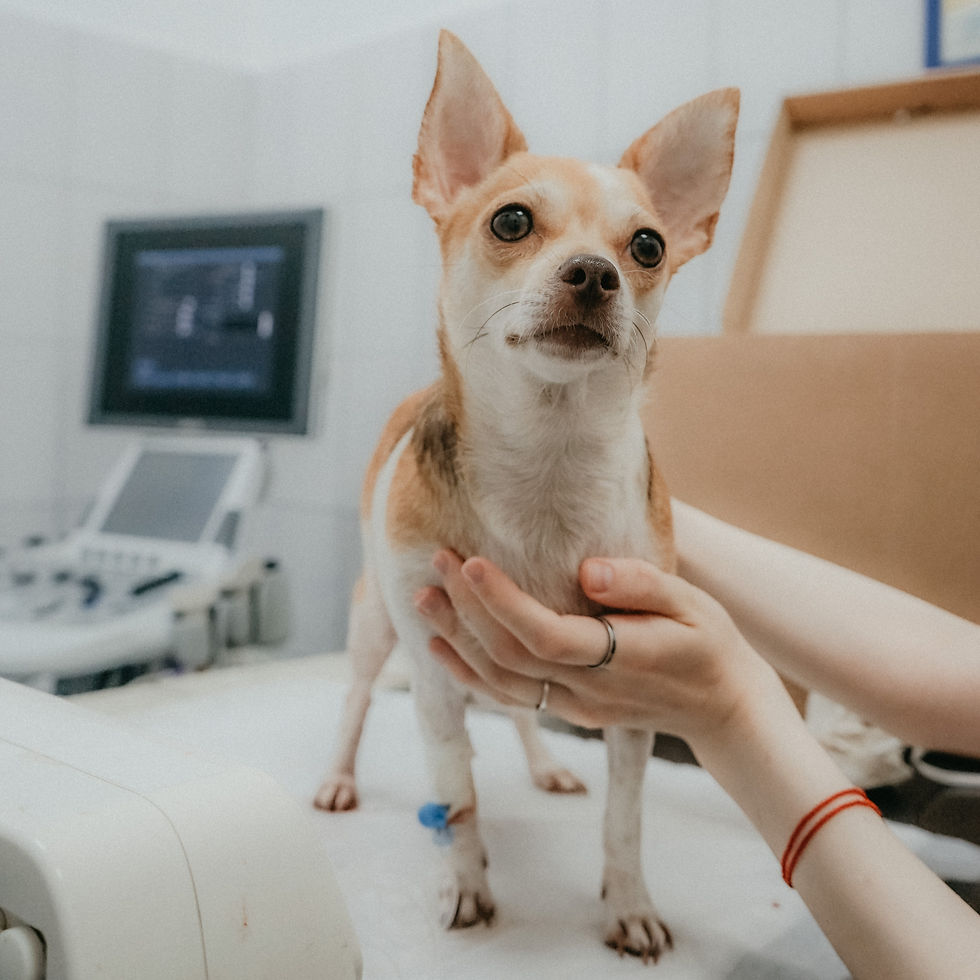Identifying and Treating Splenic Tumours in Dogs
- Christopher Mayell
- Jul 16, 2025
- 4 min read
As dog owners, we always want the best for our pets. However, sometimes our furry friends can face serious health issues, including splenic tumours. Understanding the signs of this condition is crucial for early detection and successful treatment. In this blog post, we will explore the symptoms, diagnostic methods, and treatment options for splenic tumours in dogs, helping you keep your canine companion healthy and happy.
Dog Spleen Cancer Signs
The spleen is a vital organ in your dog’s body, playing a role in filtering blood, fighting infections, and storing blood cells. When tumours develop in the spleen, they can disrupt these functions and lead to serious health issues. The first step in managing this condition is recognising the symptoms.
Some common signs of spleen cancer in dogs may include:
Lethargy: If your dog seems more tired than usual or lacks energy to participate in activities they once enjoyed, it might be a sign of an underlying issue.
Loss of Appetite: A sudden loss of interest in food or a decrease in appetite can be an early indicator of health problems.
Weight Loss: Unexplained weight loss is alarming and often associated with various medical conditions, including cancer.
Abdominal Swelling: An enlarged abdomen could indicate a mass in the spleen or other abdominal organs.
Vomiting and Diarrhoea: Frequent vomiting or diarrhoea can also signal gastrointestinal issues, which may stem from an unknown source.

Recognising these symptoms early can make a significant difference in your dog's prognosis. As soon as you notice any of these signs, consult your veterinarian for a full evaluation.
Understanding the Types of Splenic Tumours
Not all splenic tumours are the same. They can be benign (non-cancerous) or malignant (cancerous). Among the various types of tumours, the most common include:
Hemangiosarcoma: This malignant tumour originates from blood vessels and is unfortunately one of the most common splenic cancers in dogs. It can cause internal bleeding, leading to sudden collapse or death.
Splenic Lymphoma: This is a type of cancer that affects the lymphatic system and can also involve the spleen.
Benign Tumours: There are also non-cancerous growths, such as hemangiomas, but they can still cause issues if they grow large enough to impact organ function.
It's essential to get a proper diagnosis from a veterinarian, as treatment options will vary based on the type and stage of the tumour.
What are the first signs of spleen cancer in dogs?
Identifying the early signs of spleen cancer is crucial for timely intervention. The symptoms may not always be obvious, and dogs are adept at masking discomfort. Some dogs may show vague signs that can easily be overlooked, such as:
Behavioural Changes: If your dog is more withdrawn or less playful than usual, it could indicate that something is wrong.
Increased Thirst: This could potentially be linked to several health issues, including splenic tumours.
Pale Gums: This sign may point to anemia, often caused by internal bleeding, which can be associated with splenic tumours.
If you observe any of these signs, make it a priority to see your veterinarian. Early detection can lead to a better quality of life and more effective treatment options.

Diagnostic Procedures for Splenic Tumours
Once you've consulted with your veterinarian, they will likely recommend several diagnostic procedures to identify the presence of splenic tumours. Common diagnostic methods include:
Physical Examination: Your veterinarian will perform a thorough physical exam, checking for abdominal swelling and other signs of distress.
Blood Tests: These tests can reveal anemia and other irregularities that may suggest underlying health issues.
Ultrasound: This non-invasive imaging technique allows veterinarians to visualise the spleen and surrounding organs, helping to locate any masses.
Biopsy: If a mass is detected, a biopsy may be performed to determine whether it is cancerous.
These diagnostic procedures help determine the extent and type of the tumour, allowing for appropriate treatment planning.
Treatment Options for Splenic Tumours
The treatment for splenic tumours in dogs will depend on various factors, including the type of tumour, its size, and whether it has spread to other areas of the body. Options may include:
Surgical Removal: In many cases, the most effective method is to surgically remove the spleen and the tumour. This is often recommended for both benign and malignant tumours.
Chemotherapy: If cancer is detected and has spread, your veterinarian may recommend a chemotherapy protocol to manage the illness and prolong your dog's life.
Supportive Care: In cases where surgery is not an option, supportive care may help maintain your dog's quality of life. This could include pain management and nutritional support.
It's essential to work closely with your veterinarian to choose the best course of action for your dog.

Living with a Dog Diagnosed with Splenic Tumours
If your dog receives a diagnosis of splenic tumours, it can be an emotional and challenging time for any pet owner. Here are some tips for managing your dog's health after diagnosis:
Follow-Up Appointments: Regular check-ups with your veterinarian are essential for monitoring your dog's health and adjusting treatment as needed.
Maintain a Healthy Diet: Ensure your dog is eating a balanced diet to support their recovery. Your vet can provide dietary recommendations suitable for your dog's specific needs.
Monitor for Symptoms: Keep a close eye on your dog's behaviour, appetite, and overall health. Any changes should be reported to your veterinarian promptly.
Seek Emotional Support: It's important to seek support from friends, family, or pet support groups, as dealing with a pet's illness can be challenging emotionally.
By being vigilant and proactive, you can help manage your dog's health effectively.
Being informed about potential health issues, such as splenic tumours in dogs, empowers you to take action and seek veterinary assistance when necessary. Don't hesitate to contact your veterinarian to discuss any concerning symptoms your dog may exhibit, ensuring you provide the best possible care for your furry friend.




Comments